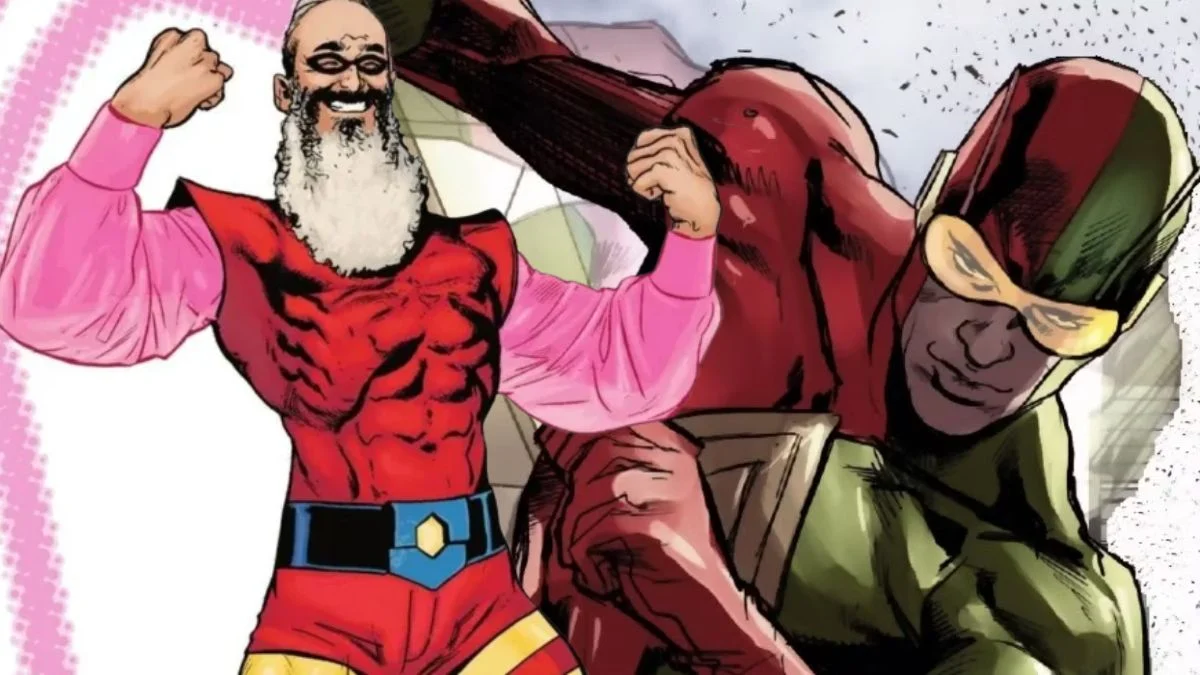
Not every superhero gets off to a strong start. Some introductions are instantly exciting, while others feel hastily conceived. The world of superheroes is known for taking risks and trying new things, which is great, but it also means some heroes have surprisingly strange beginnings.
This collection highlights characters who started out in unusual, clumsy, or confusing ways when they were first introduced. We’ll explore each hero’s original appearance, their creator, and the odd events that launched their careers, including information about the publisher.
The Whizzer
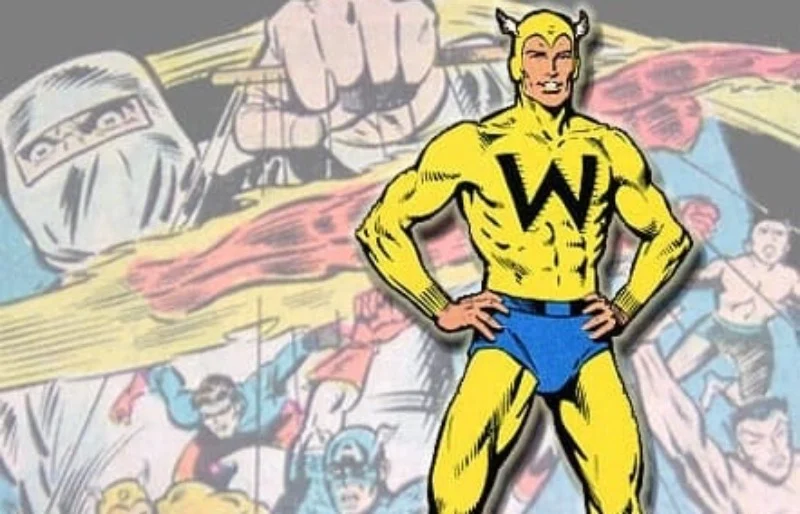
This fast-moving hero from Marvel Comics debuted in the company’s early days (then known as Timely) and was created by Al Avison and Don Rico. He gained his super speed in a bizarre way: a doctor treated a snake bite by giving him a blood transfusion from a mongoose, which unexpectedly unlocked his powers. He later teamed up with other popular Timely characters, always with the unique origin story of a mongoose blood transfusion.
I’ve always been fascinated by this character, and it’s interesting how Marvel tried to explain his origins later on. They moved away from the magical stuff and tried to give him a scientific background, which was a bit of a shift. But honestly, what *really* stuck with me – what made him so unique compared to other speedsters – was that whole mongoose thing! It’s such a weird and memorable detail, and it’s what I always remember about him.
Bouncing Boy
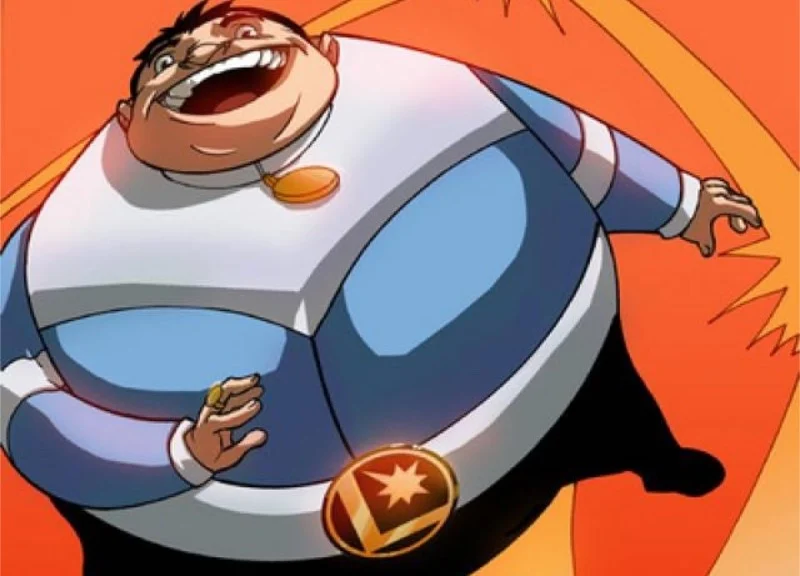
Chuck Taine, known as Bouncing Boy, became a member of the Legion of Super Heroes in a rather unusual way. He accidentally drank an experimental super-plastic formula thinking it was soda, which gave him the power to inflate like a balloon and bounce around. Early stories focused heavily on this accidental transformation as the core of his origin.
DC Comics writers later expanded on his character within the Legion stories, and developed his connection with Duo Damsel. However, they kept the initial accidental-creation storyline as the core of his origin. The humorous idea behind the character remained consistent, but it was enriched with more emotional depth.
3-D Man
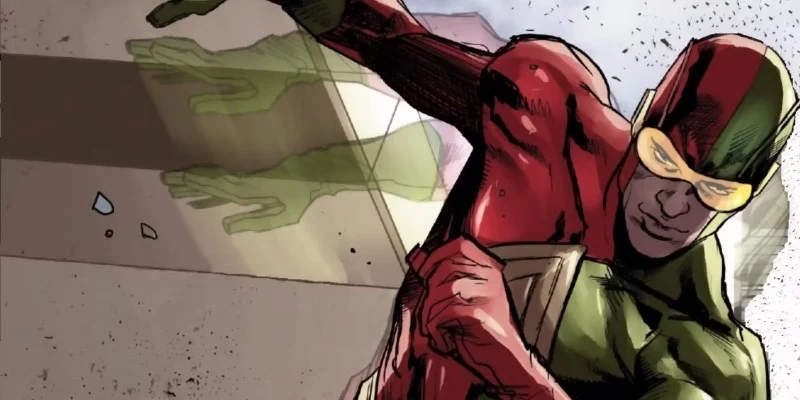
Marvel Comics created the hero 3-D Man with writer Roy Thomas and artist Jim Craig. Test pilot Chuck Chandler was caught in an explosion linked to the Skrulls, which somehow transferred his energy into his brother Hal’s glasses. Hal could then focus on a picture of Chuck to summon a super-powered hero – a combination of both brothers – with three times the normal strength, speed, and endurance. The idea of activating this power through a pair of glasses was central to the character’s design.
Later Marvel comics featured the character in various team-ups and passed on the hero’s mantle to different people, occasionally changing who was behind the mask. The unusual use of older 3D visual effects continued to be the key element that made the character’s beginnings unique.
NFL SuperPro
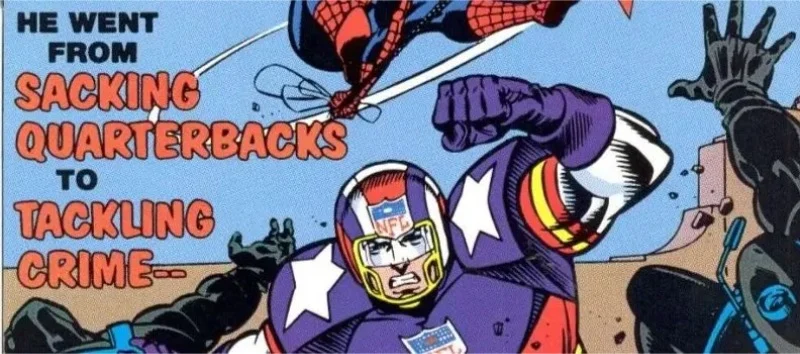
This Marvel hero came about through a unique partnership between football and superhero storytelling. Phil Grayfield was caught in a lab accident that permanently fused his indestructible football uniform to him. Afterward, he dedicated himself to fighting crime, all while staying connected to the world of football. Essentially, he became a defender who tackles criminals instead of opposing players.
Marvel continued the character’s story for a brief period, including guest appearances and villains connected to the world of sports. However, the character’s background remained focused on the original suit and the commercial branding that marked his first appearance.
Red Bee
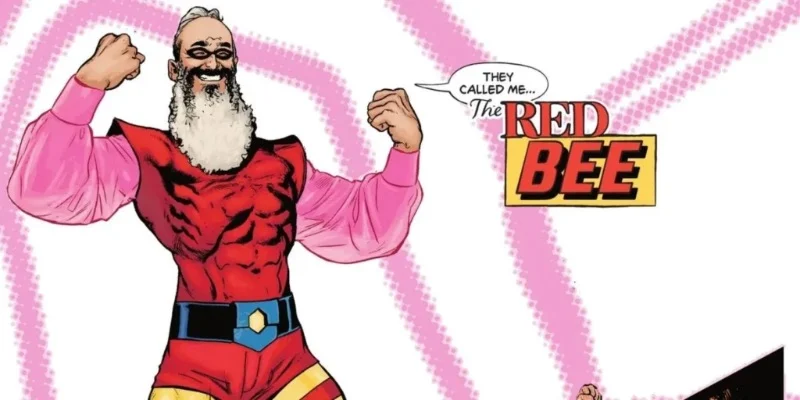
I always loved those quirky Golden Age heroes, and Red Bee is right up there! He wasn’t created by some lab mishap or given powers from outer space, which is cool. Instead, he started as a character at Quality Comics before becoming part of the DC universe. The story is that Rick Raleigh was a district attorney who actually *trained* bees – can you believe it? He even had a favorite bee named Michael he kept in a special compartment on his belt. He’d use them to disorient and sting criminals while he was on patrol. It’s such a unique and surprisingly effective crime-fighting method!
DC Comics has reimagined the character multiple times, introducing new heroes and even giving some versions superpowers. The original version became well-known for its unique approach: it used a special belt and trained bees instead of the usual source of power.
Elongated Man
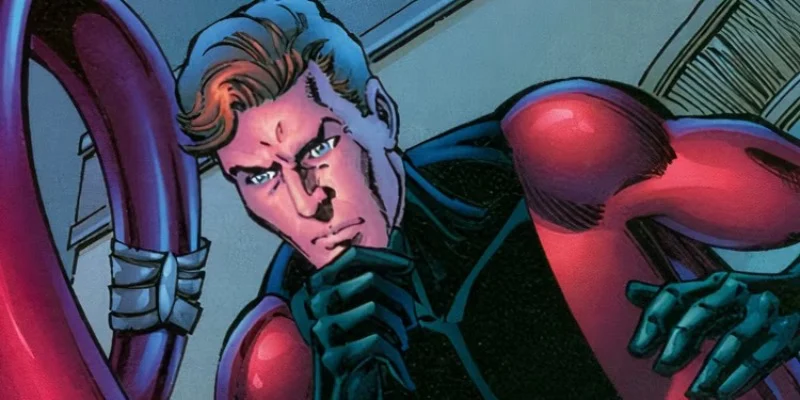
DC Comics first presented Ralph Dibny as a realistic character. He discovered that a drink made from the rare gingo fruit, called gingold, allowed him to stretch his body incredibly far. He then perfected the recipe to make this stretching ability consistent. The story showed him as a detective who used his newfound elasticity to solve crimes alongside his wife, Sue.
As DC Comics’ storylines developed, writers gave Sherlock Holmes a more detailed backstory and positioned him alongside heroes like the Flash. His beginnings remained grounded in a self-made potion and his natural skill for solving mysteries, rather than a fantastical, universe-altering event.
Hindsight Lad
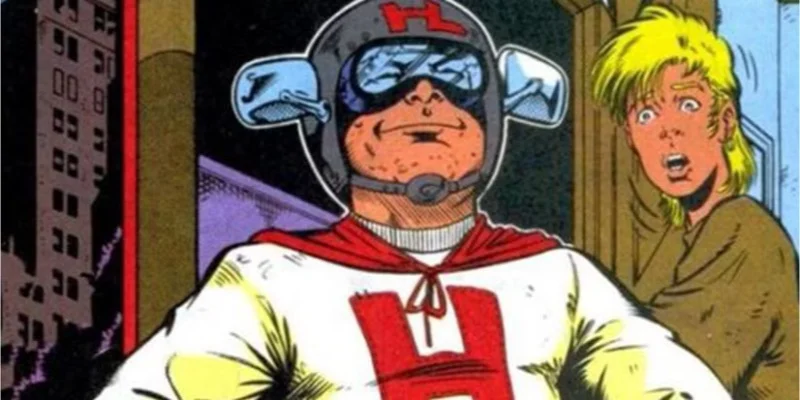
Hindsight Lad first appeared in Marvel Comics as a character connected to the New Warriors, created by Fabian Nicieza and Darick Robertson. Originally named Carlton LaFroyge, he discovered the team’s secret identities by eavesdropping on his neighbor, Speedball, and blackmailed his way into joining them. He then reinvented himself as their strategist, focusing on analyzing events after they happened. Unlike most heroes, he didn’t gain powers through mutation or technology; instead, he found his place by gathering and using information.
I’ve always found it interesting how Marvel eventually repositioned this character. They moved him away from being a central hero and instead used him for comedic relief and insightful commentary on the craziness surrounding the main superhero teams. What really struck me, though, was his backstory. He wasn’t motivated by typical heroic ideals; instead, he was driven by pure curiosity and a knack for finding leverage – a really unique foundation for someone in a costume trying to do good.
Stone Boy
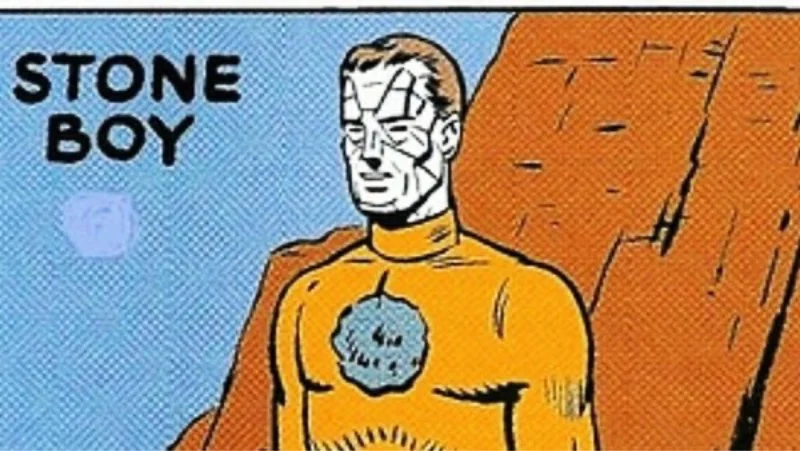
Dag Wentim, a character from DC Comics’ Legion of Substitute Heroes, came from the planet Zwen. On Zwen, people regularly entered a state of suspended animation to cope with demanding work schedules. While turning into stone was common for Zwenians, it proved difficult for Dag when fighting crime, as he became completely motionless during the transformation. His power wasn’t so much a special ability as a natural part of his home world’s way of life.
Detective Chimp often provided comic relief and surprisingly smart strategies during Substitute cases. His backstory remained consistent – his limited abilities were always explained by a long period of hibernation.
Color Kid
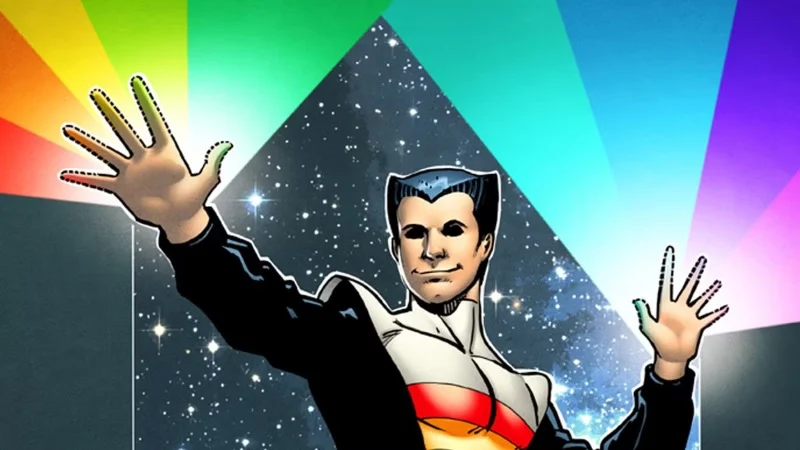
Ulu Vakk, a DC Comics character, gained the ability to control colors after being hit by a strange beam from an alien prism while working as a scientist’s assistant. This accident changed his senses, allowing him to disorient opponents and create illusions to help his friends. After not making the cut for the main Legion of Super-Heroes, he became a member of the Legion of Substitute Heroes.
DC Comics writers occasionally expanded his powers to include wavelengths beyond what we can see. However, his core origin story always remained consistent: it still involved an accident in a lab with technology from another planet.
Wonder Twins
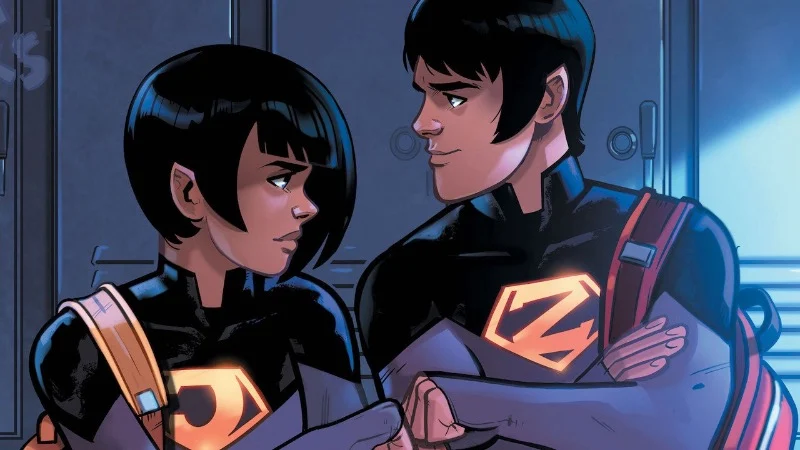
Zan and Jayna first appeared in the *Super Friends* cartoon before being featured in DC Comics. These twin aliens from the planet Exxor gain their powers by touching fists and saying a special phrase. Jayna can transform into any animal, while Zan can become water in various forms. Their backstory emphasizes their alien origins and teamwork, rather than a specific event on Earth.
DC Comics later developed the characters’ origins further through short series, reimagining them as students in a contemporary school. The core idea – that they needed to link up to unlock their abilities – remained central to all their initial stories.
Dazzler

Alison Blaire is a mutant created by Marvel Comics who performs as a singer. Her unique ability lets her transform sound into dazzling light shows during concerts. She chose to pursue music while keeping her powers secret, fearing how the public and music industry might react. Like many mutants, her abilities developed naturally during her teenage years.
As a huge Marvel fan, I’ve always loved how they’ve taken this character in so many directions – putting her on different teams and sending her into these crazy cosmic adventures, even having her team up with the X-Men for a while. But what really stuck with me is that no matter where her story went, it always came back to her roots: performing. It’s amazing to think about how her powers essentially *were* the performance – the stage, the lights, the whole show was built into her biology!
Angel
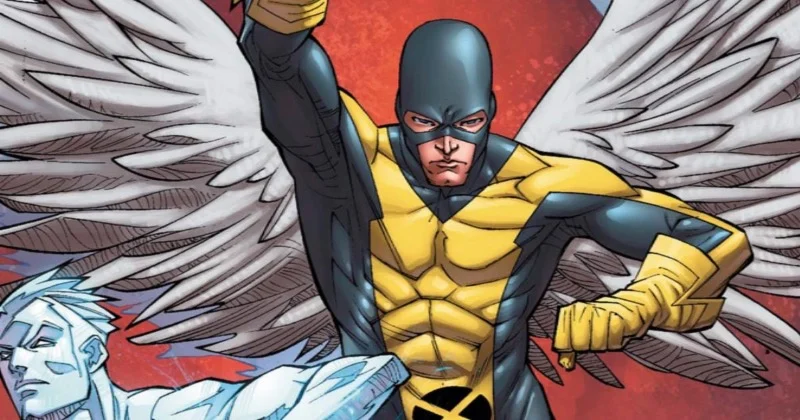
Warren Worthington III first appeared in Marvel Comics as a privileged student at a boarding school. He unexpectedly developed feathered wings and initially attempted to fight crime as a masked hero before becoming an X-Man. His powers emerged during his youth, and he began by secretly building equipment to hide and then utilize his wings for flight around school.
Over time, Marvel expanded the story with evolving characters and team interactions spanning different periods. However, the core of the narrative always revolved around a student at a boarding school grappling with a noticeable and difficult-to-conceal physical transformation.
Jubilee
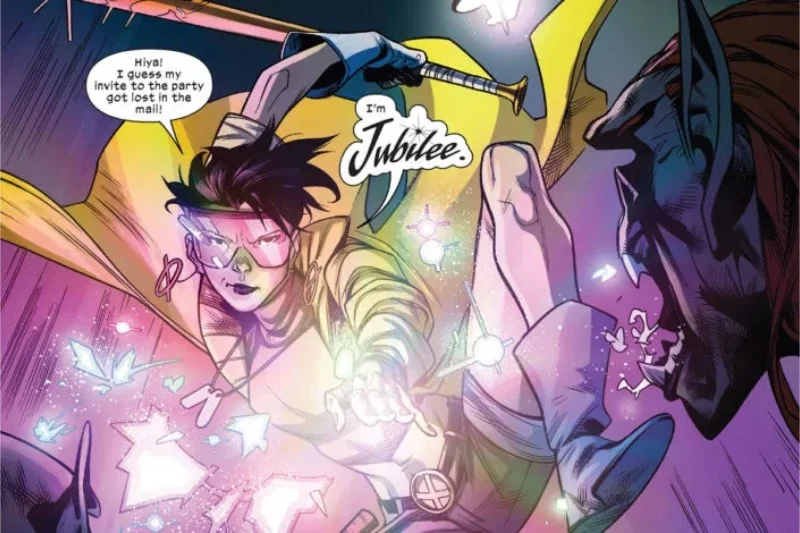
Jubilation Lee, also known as Jubilee, first appeared in Marvel Comics as a teenage runaway. She lived in a California mall and had the mutant ability to create explosive bursts of light. The X-Men discovered her when she used her powers to defend herself from people chasing her inside the mall, leading to her training with Wolverine and eventually joining the team. Her beginnings were deeply tied to the world of shopping malls and arcades.
Marvel consistently used the mall setting as a key visual, even as her character joined different teams and experienced various time periods. Her initial breakthrough wasn’t tied to any scientific experiment or special object; it simply showed a young mutant using her powers publicly, which ultimately led to her being recognized as a hero.
Arm Fall Off Boy
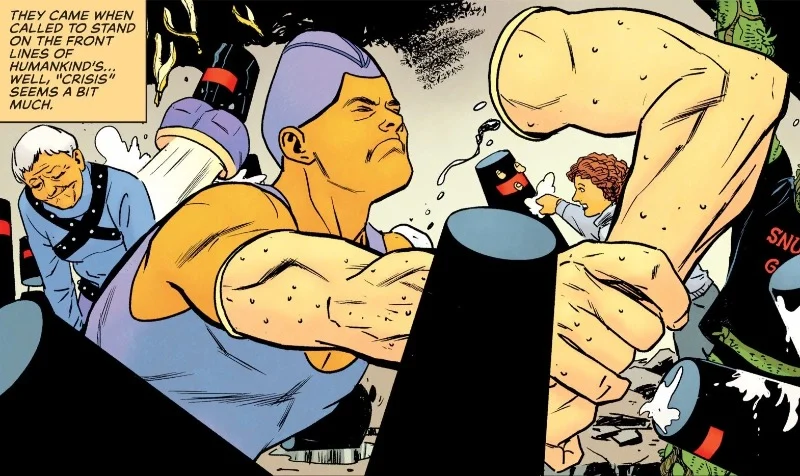
This unusual DC Comics character first appeared in a story designed to test new heroes, and he had a unique ability no one else possessed. He could detach his arms and legs and wield them as weapons, either throwing them or using them himself. The story suggested his powers came from being exposed to a strange substance, but his origins remained mysterious, relying more on the visual humor of his detachable limbs than a detailed explanation.
Over time, DC Comics gave the character different names and altered his backstory, occasionally using him for comedic effect in contemporary stories. His origins were always vague, which reinforced his aloof personality as his most notable characteristic.
Captain Ultra
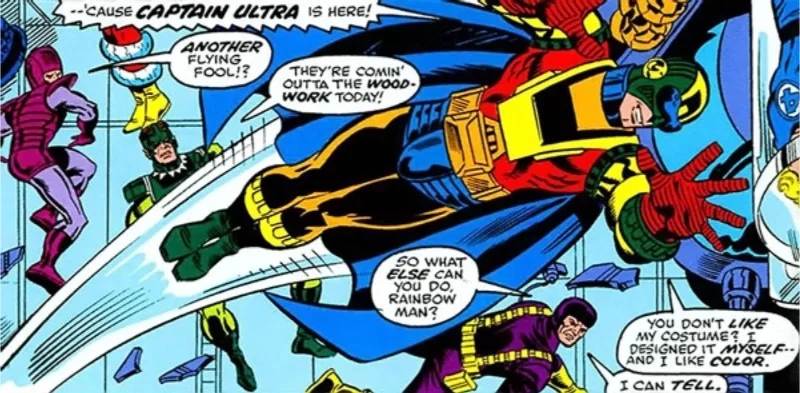
Marvel Comics created the character Griffin Gogol, a plumber who gained superpowers through alien hypnosis. This process unlocked hidden abilities, but also gave him a strong fear of fire, which developed during the transformation. His introduction to the Marvel Universe placed him in a unique position, balancing everyday life with powerful, cosmic abilities—all while struggling with this unexpected phobia.
Marvel continued to feature the character in humorous team adventures and occasional solo missions, allowing his abilities to stand out when fire wasn’t a factor. His backstory consistently highlighted the hypnosis that granted him powers, and the resulting, often problematic, combination of abilities always felt like both a gift and a curse.
Let us know in the comments which superhero origin stories you find the most confusing or puzzling – we’d love to hear your thoughts and compare notes!
Read More
- Silver Rate Forecast
- Gold Rate Forecast
- Красный Октябрь акции прогноз. Цена KROT
- MSCI’s Digital Asset Dilemma: A Tech Wrench in the Works!
- Dogecoin’s Big Yawn: Musk’s X Money Launch Leaves Market Unimpressed 🐕💸
- Bitcoin’s Ballet: Will the Bull Pirouette or Stumble? 💃🐂
- Guardian Wealth Doubles Down on LKQ Stock With $1.8 Million Purchase
- Binance and Botim Money Join Forces: Crypto in the UAE Gets a Boost-Or Does It? 🚀
- Twenty One Capital’s NYSE debut sees 20% fall – What scared investors?
- Monster Hunter Stories 3: Twisted Reflection gets a new Habitat Restoration Trailer
2025-10-09 18:31